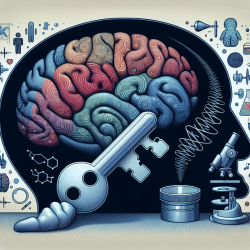As a practitioner working with individuals affected by neurodevelopmental disorders, staying informed about the latest research is crucial. One such study, titled "Assessing the integrity of auditory sensory memory processing in CLN3 disease (Juvenile Neuronal Ceroid Lipofuscinosis (Batten disease)): an auditory evoked potential study of the duration-evoked mismatch negativity (MMN)," offers valuable insights into auditory sensory memory and its implications for clinical practice.
The Importance of Auditory Sensory Memory
Auditory sensory memory is a critical component of cognitive processing, particularly in individuals with CLN3 disease. This rare neurodegenerative disorder impacts various cognitive functions, including memory and attention. The study explores how auditory sensory memory can be assessed using the mismatch negativity (MMN) component of event-related potentials (ERPs).
Key Findings from the Study
- The research highlights that individuals with CLN3 disease exhibit robust MMN responses at medium stimulation rates (900 ms), indicating intact auditory sensory memory processes.
- The MMN response diminishes significantly at slower presentation rates (1800 ms), suggesting increased demand on the sensory memory system.
- The study also notes that MMN responses are significantly reduced at the fastest presentation rate (450 ms) compared to neurotypical controls.
Implications for Practitioners
The findings from this study provide practitioners with a deeper understanding of how auditory sensory memory functions in individuals with CLN3 disease. By recognizing the challenges associated with different stimulation rates, practitioners can tailor their approaches to better support cognitive and perceptual capabilities in this population.
Encouraging Further Research
This research opens the door for further exploration into how auditory sensory memory can serve as a biomarker for disease progression and treatment efficacy in CLN3 disease. Practitioners are encouraged to consider these findings in their practice and contribute to ongoing research efforts.
If you're interested in delving deeper into this topic, I highly recommend reading the original research paper. You can access it by following this link: Assessing the integrity of auditory sensory memory processing in CLN3 disease (Juvenile Neuronal Ceroid Lipofuscinosis (Batten disease)): an auditory evoked potential study of the duration-evoked mismatch negativity (MMN).










